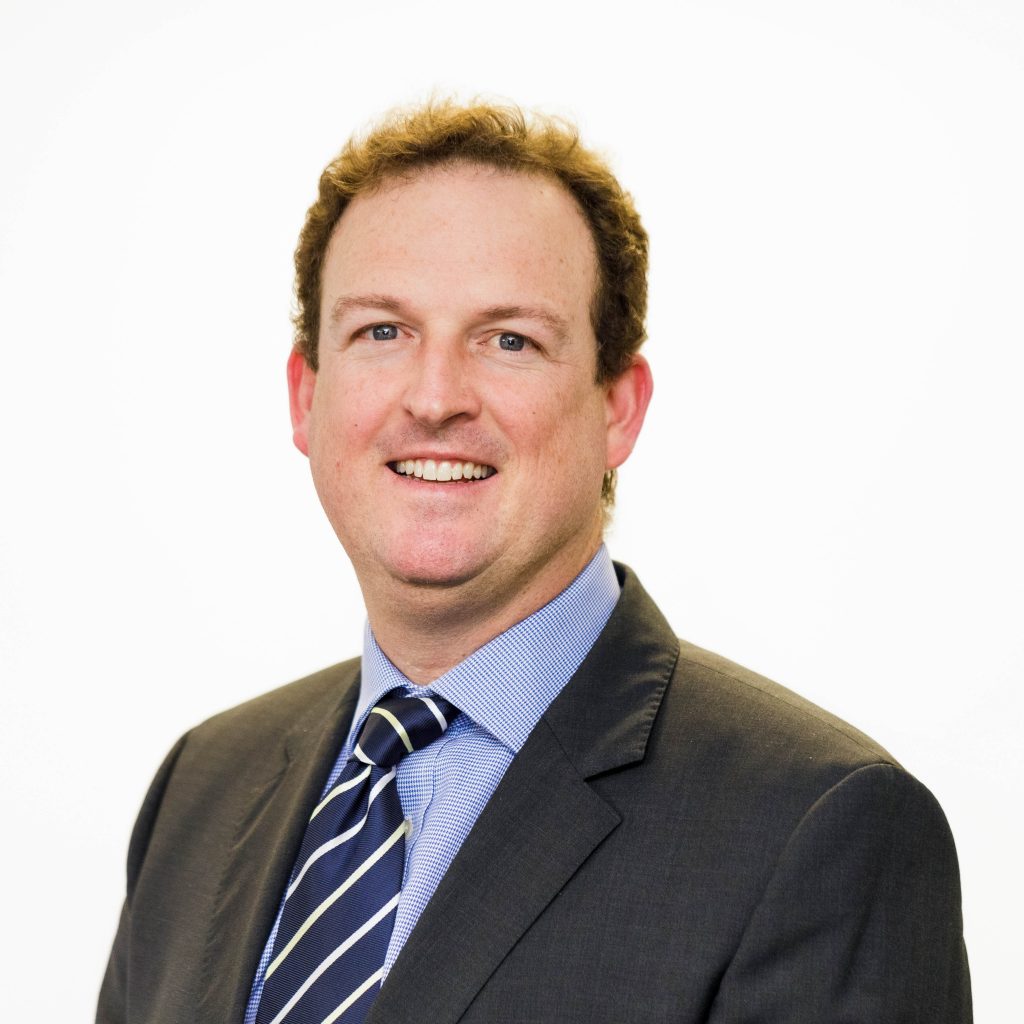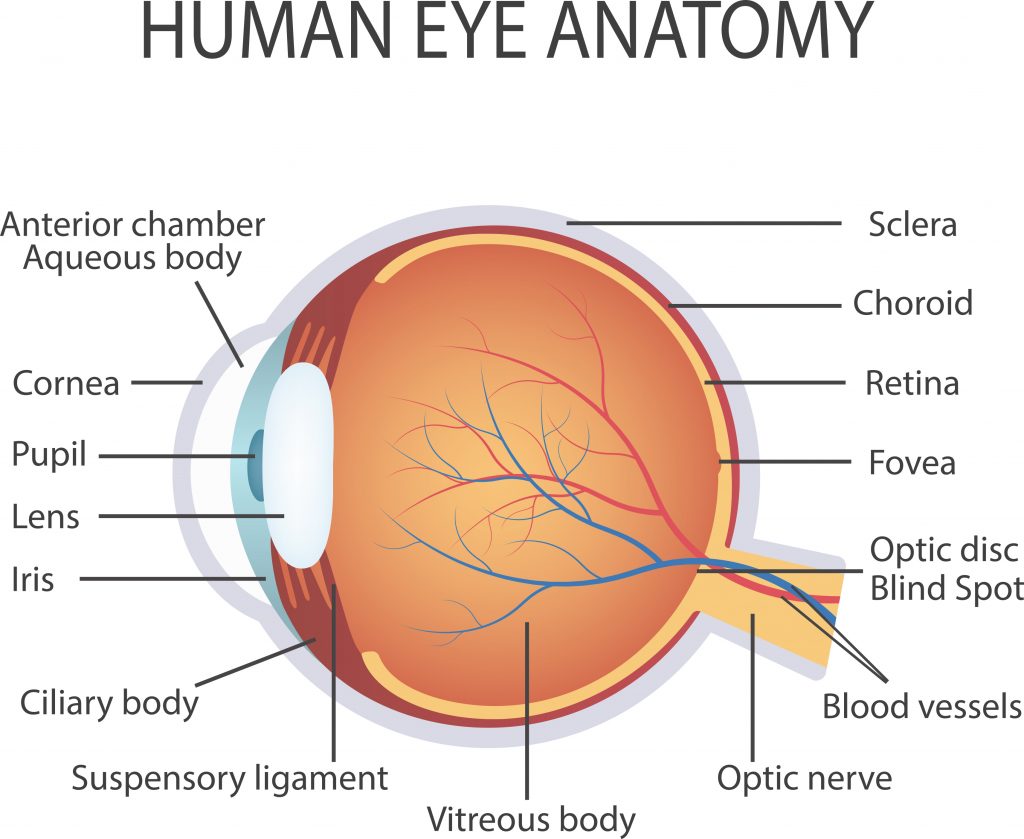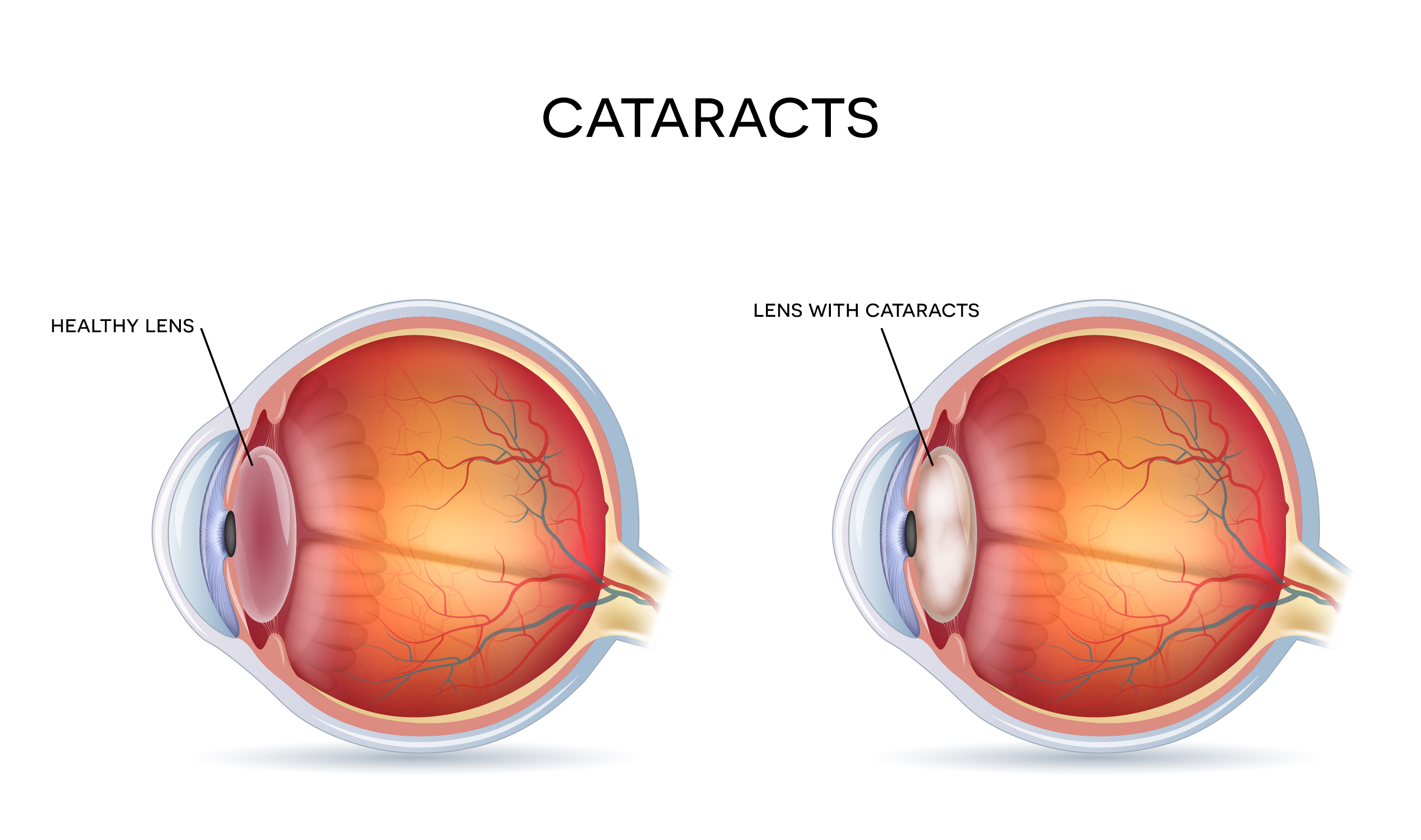June is cataract awareness month, a time to raise awareness and understand more about this eye condition. Cataracts are the leading cause of blindness in adults around the world and in Australia it is now one of the most commonly performed surgeries. The first intraocular lens (IOL) was implanted by Harold Ridley on 29th November 1949.
Today lens implementation is the most common and one of the most successful of all eye operations. [1] Thanks to advances in treatment, surgery, cataract operations are now a day visit at hospital with the procedure taking no more than 30 minutes.
What are cataracts?
A cataract is a clouding of the lens in the eye which is usually clear. This cloudiness then scatters the light travelling to the retina causing blurry vision. In the early stages of cataract, a different prescription from your optometrist may help to improve vision. However, as the cataract worsens, the only way to improve vision is with an operation.
Factors associated with developing cataracts:
- Cataracts are common in those over 60 years old as the proteins in the lens of the eye start to break down and clump together. This causes the cloudiness in the lens that we call a cataract. Young people and even babies (congenital cataract) can have a cataract although this is rare. It is common for both eyes to be affected.
- Exposure to ultraviolet light during a person’s lifetime can be a contributing factor.
- Malnutrition and general gastro-intestinal diseases (diarrhoea and vomiting) in developing countries has seen higher incidences of cataracts.
Cataract surgery
All the Ophthalmologists at Queensland Eye Institute (QEI) conduct cataract surgery. Dr Geoffrey Ryan is one who performs this surgery at South Bank Day Hospital (operated by South Bank Medical Group) and in Kingaroy at Lady Bjelke-Petersen Community Hospital (also operated by South Bank Medical Group). Lady Bjelke-Petersen Community Hospital provides vital services in the South Burnett region of Queensland.
As Dr Ryan highlights, “Performing the surgery in Kingaroy (300 – 400 surgeries per year) reduces travel for patients located in a regional area who already may have difficulty driving due to cataracts. The reduced medical services in regional areas create a barrier to patients receiving appropriate care on time. In conjunction with the Queensland Eye Institute (QEI), we are trying to bridge the gap for regional patients. QEI ensures I have the latest surgical equipment which means a patient will get the same surgery regardless of the location of the operation (regional or metropolitan).”

Cataract surgery involves removing the cloudy lens and replacing it with a clear acrylic lens which takes about 15 – 20 minutes. Surgery uses very small sutureless incisions, a specialized “phacoemulsification” machine to dissolve the cataract and special lenses that unfold inside the eye. It is a day hospital procedure performed with local anaesthetic and twilight sedation. With the relaxing medication administered during the operation, patients will not feel anything and usually have no memory of the surgery. The patient will tend to be in the hospital for about 3 hours in total and can return to a clean work environment after 48 hours.
As cataract surgery involves replacing the cloudy lens with a clear acrylic lens, this lens can be updated with a prescription. As a result, to varying degrees, this avoids the need for glasses or contacts following surgery.
Advances in cataract surgery
With advances in cataract surgery, this can also be performed in combination with glaucoma or retinal surgery.
Dr Ryan explains, “The diagnostic equipment available today allows us to calculate the lens power specifically tailored to an individual’s eye. It is no longer a one size fits all when it comes to choosing lens technology. We now can customise lens selection, ensuring optimal quality of vision. Cataract surgery is the most common operation I perform. I now use it to:
- Improve the vision of my patients.
- Reduce the need for glasses.
- I also combine cataract surgery with new stent technology in patients diagnosed with glaucoma. This reduces the need for eye drops and helps prevent glaucoma progression.”
Education & Training
QEI’s Director of Education Dr Brendan Cronin says education is one of the core principles of the Queensland Eye Institute.

“Teaching people is fun and rewarding,” he says, “but teaching people also educates us, the teachers.”
“I am always amazed by what trainees can teach us and it highlights the fact that the surgery is complex and very difficult to learn, a fact that we sometimes take for granted when we have become very experienced at it.”
Read more about cataracts here.

